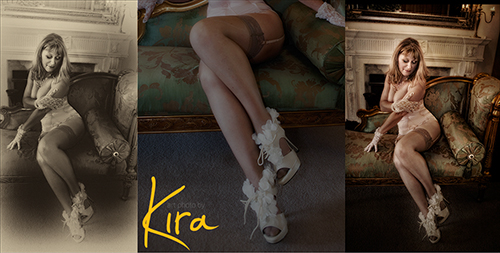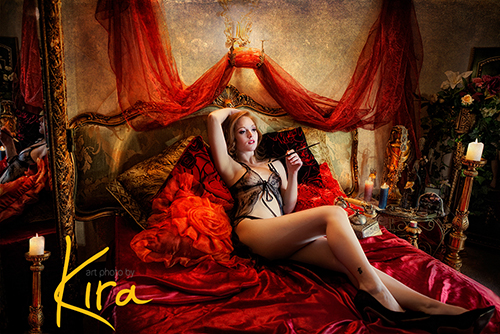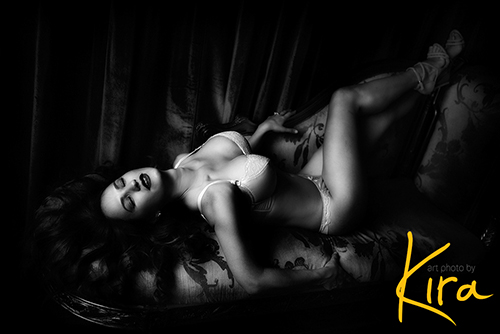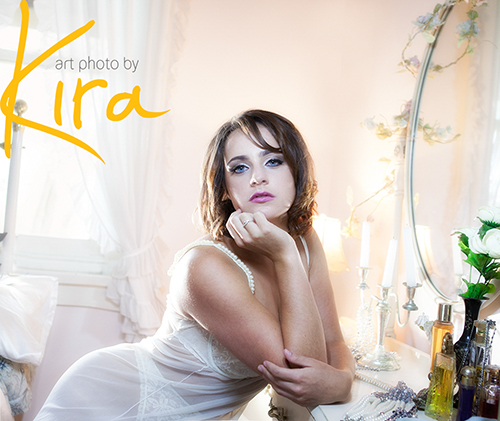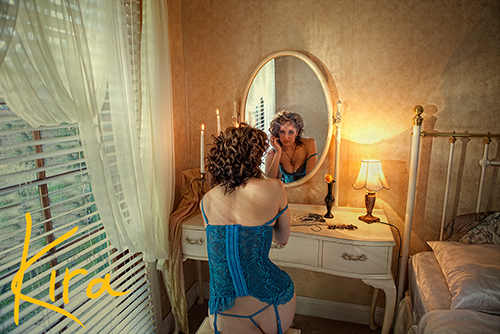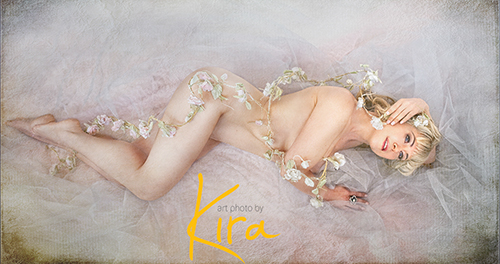The History of Boudoir Photography
The History of Boudoir Photography
Boudoir photography is a highly personal, intimate approach to capturing your portrait images. Essentially, this style captures subjects at their most vulnerable – in their bedrooms or dressing rooms while dressed in lingerie, negligees, and similar nightwear.
The idea behind this concept is simple: portray your subjects at their most raw and real by allowing them to put themselves out there to show to the world. Boudoir was once primarily considered a private style of photography that was only meant to be shared between lovers and romantic partners. However, it has continued to become more popular for all sorts of reasons, including the following:
- Female Empowerment
- Celebration of an Engagement or Major Life Event
- Affirmation of Elegance and Beauty
- Celebration of Weight Loss
What is boudoir photography? While the term has evolved to become a popular choice for many women today, this style dates very far back in the history of photography.
Capturing intimate portraits of female subjects has long remained an interesting and captivating element of the history of photography. The following discussion will outline the major historical points of boudoir – from its early days when photography was young all the way up to what it means in the 21st century.
While boudoir certainly includes nude and erotic imagery, our goal here is to get to the heart of the personal and intimate elements of this unique style of photography rather than the explicit subjects. As you’ll soon read, it’s this particular theme that has endured across the years of this wonderful component of photographic history.
Getting to Know Boudoir
If you hadn’t already guessed, the term boudoir comes from the French language. It actually originally stems from the verb bouder, which means to sulk. Earlier in history, sulking was a highly personal activity that was reserved for a particular room in your home. This is much different than the public outbursts we’re so used to seeing on social media today.
This bouder room was like a personal sanctuary where you could withdraw to and sulk in (likely for a variety of dramatic purposes). However, over the years, the term has evolved from a place to let off steam to a personal or intimate setting such as a personal dressing room, bedroom or walk-in closet.
As the meaning of boudoir has changed, today’s connotation of the style is to denote a room which is ornate, decorative, and almost Victorian in its elegance. This style is frequently portrayed as a subject’s bedroom or closet. However, it’s not uncommon to photograph subjects in hotel rooms, studios, and other locations that still highlight this intimate, sensual style.
The Origins of Boudoir in Photography
As the boudoir space became more well-known, photography itself began to take hold and gain worldwide popularity. The chemical process for capturing and developing images on film steadily gained traction during the 19th century. However, it wasn’t until the late 1800s before photography became a worldwide phenomenon.
In 1884, George Eastman was the first person to develop the concept of dry gel on paper (i.e. film) to successfully capture images. He used this invention to later create the Kodak camera company just four years later in 1888. Once Kodak made its way out for public use, the photography world changed forever.
The photography revolution changed the way we record and understand history. And this type of understanding created a wonderful array of photographic styles, preferences, trends, and related components. One of these trends took hold as the concept of intimate and erotic female imagery. And despite the likely indecent motivation, this specific area is what helped to yield the inception of boudoir style pictures.
19th Century Boudoir
As mentioned, the concept of erotic or intimate female portraits and images is nothing new across our entire collective range of human history. However, the particular area of boudoir-related imagery didn’t distinguish itself until somewhere in the 19th century. Much of the trend corresponded to Eastman Kodak’s cameras becoming popular, widespread, and attainable. However, there was quite a bit of boudoir-esque portraits and illustrations even before cameras were used.
Erotic photography was becoming a fairly common sight in France, where postcards, pin-up girls, and other images were available to see. However, erotic images of women were nothing new across other areas of the world as well. It was this intimately set portrait-style concept that distinguished boudoir from other types of erotic or sexualised images.
Underneath the surface-level aspect of “naughty images,” boudoir’s true roots are much more empowering. The idea is that women began to take more direct and active control of their reputations. This control was especially important in how they were portrayed in public areas such as photography and written work.
While it was easy to classify boudoir as pornographic or explicit, the truth is that this style was distinctly different – even back in the 19th century. Women wanted to be portrayed in a way that reflected who they were. This insistence is what helped them demand the control to be photographed in intimate settings exactly how they wanted to be seen.
In many ways, the boudoir style was a progressive, empowering movement that put the power back in women’s hands. While the style captured their vulnerability and intimacy, it was never out of their control. Accordingly, perhaps you could say that the movement was an early component toward the shift to better treatment of women in society.
The Shift to the 20th Century
While the boudoir movement certainly had pockets of female-empowerment in the 1800s, it lacked the unity and forward momentum to become a global trend. That all changed by the 1920s with the help of an artist named Arthur Allen.
Originally from France, the San Francisco-based artist was no stranger to controversy. By the 1920s, he had already been arrested multiple times for his art and photography. Much of the reason was due to the fact that nudity was still illegal within photographic art. But like other strong-willed artists, Allen pressed on with his photography despite the legal challenges he faced.
When you take the time to look at Arthur Allen’s photography, you’ll quickly see beyond the surface-level dismissal of his work as obscene or pornographic. His portraits showcased artistic expression that reflected the beauty of women – no matter their size or shape. And this type of vision is one of the primary components of boudoir which has endured until today.
Allen’s work continued to impress both photographers and artists alike for years after his career. Despite the controversy and legal struggles, he persevered and released several more works that captured women in their intimate, highly personal forms. Looking back at his catalogue, his usage of models of all shapes and sizes has definitely inspired the empowerment revolution that fueled the ongoing forward-motion of boudoir photography as a genre.
Pin-Ups, Marilyn Monroe & Beyond
As the 20th century pressed on, the focus of the 1940s and 1950s became the pin-up girls. While this style first became noteworthy back in the 1800s, it truly emerged into popular culture during this period.
Drawings of pin-up girls came into prominence through Esquire Magazine during this time. And these images were sent over to the soldiers overseas to help them cope with the struggles of war. This immense popularity continued to fuel the boudoir style of sensual and intimate portraits – both in the pin-up girl format and beyond.
Right alongside the pin-up girl “revolution,” the Hollywood culture began to expand much more directly into the public spotlight. And one of the largest stars within this generation was Marilyn Monroe. Monroe started her illustrious career right within the boudoir pin-up photography world. Once she made her break into Hollywood, however, pin-up models shifted from a popular soldier’s wall hanging to a mainstream icon of femininity.
Around this time, several photographers emerged and were popularised with their photographs of Monroe. Englishman Cecil Beaton is one of the most famous examples with a series of intimate, boudoir portraits of the Hollywood powerhouse. Marilyn herself was quite fond of Beaton’s work, noting her own preference for a shot right out of one of his collections.
In addition, another photographer by the name of Sam Shaw was also famous for his intimate portraits of Marilyn Monroe. Shaw, a New York native, worked to capture Monroe’s natural beauty and “woman-ness” in his pictures. Shaw’s work looked beyond Monroe’s reputation as a cultural sex symbol, showcasing her raw innocence and genuine candor in his pictures. This type of dynamic is what continued to grow as the focal point within the genre of boudoir portrait photography.
70s to 80s Feminist Empowerment
As the feminist movement gained cultural traction, the boudoir movement was not far behind. Photographic trends started to shift back toward capturing subjects for who they were at the time – raw, genuine, and unfiltered. Pin-up models of the 40s and 50s featured airbrushed illustrations of idealised women. While much of this helped to empower women, it also stood in the way of genuine expression.
The 1970s shifted the dynamic of the “illustrated ideal” and moved it toward the genuine woman. Photographers at the time worked to capture women as exactly as they were. Much like Sam Shaw’s work with Marilyn Monroe, this photography was about authenticity over idealisation. As a result, the culture further shifted the boudoir dynamic toward a more genuine reflection of intimacy.
As the 70s pressed onward to the 80s, this style began to come together in a more defined style that women could specifically request in their photography. Boudoir had developed its own concrete definition – and with it came an industry that provided women with an outlet to capture their genuine intimacy, vulnerability, and rawness. Best of all, the style had transformed to become something that women wanted to celebrate themselves – a significant step forward within feminist empowerment.
Where Contemporary Boudoir Has Taken Us
With such a celebrated history behind it, boudoir photography has come a long way to where it is today. The primary themes driving the boudoir movement today include the following:
- Comfort & Ease with Yourself
A boudoir photographer’s job is to make his or her subjects feel completely comfortable in the process. Capturing a subject while she’s feeling vulnerable or insecure can sabotage the eventual end result. However, boudoir works to overcome this type of photographic dynamic. By placing subjects in an intimate setting, you can feel relaxed about who you are and what you’re doing. This type of genuine rawness produces much more authentic portrayals of reality than most other photographic styles.
- Willingness to Capture Yourself “Raw”
As mentioned, boudoir is all about capturing you at your most raw and vulnerable. But the true heart of this style isn’t about forcing you to pose in any way. Instead, it’s about giving you the space to feel relaxed enough to open up – and almost forget that the camera is in front of you. That way, you can allow your true self to emerge in front of the camera and create some truly beautiful photographic artistry.
- Going Beyond Your Insecurities
Normal photography tends to cause us to focus on our faults and highlight our insecurities. Successful boudoir photography can achieve the opposite effect on subjects. Feeling relaxed within these intimate settings can create something that goes beyond any other type of photography style. It can transcend your insecurities to capture you as you really are (which is a highly sought after objective for pretty much all photography).
- Capturing Your True Beauty & Essence
In the end, beauty comes in all shapes, all sizes, and all forms. You need to appreciate your own personal beauty because it’s really there with you at all times. Contemporary boudoir is all about helping you see your beauty – right where you are.
There’s no need to mask your authentic sense of self behind your insecurities. Instead, boudoir is about empowering you to understand that you’re beautiful, sensual, sexy, and amazing right now. When you see this level of genuine authenticity in a subject, you’ll recognize it immediately. It’s what distinguishes everyday pictures from truly extraordinary photography.
Discover more boudoir photography ideas and poses here.
Did you like our boudoir photography tips? Check some great free stuff Here.

